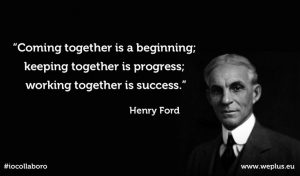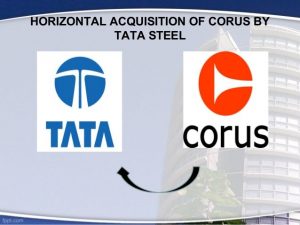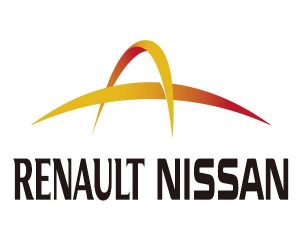The pursuit of synergy is practiced by most businesses in the world. The boardrooms are full of brainstorms about ways to collaborate more effectively. Cross-business teams are set up to develop key account plans, coordinate product development, and proliferate best practices. Synergy is the concept that the value and performance of two companies combined will be greater than the sum of the separate individual parts. Synergy is a term that is most commonly used in the context of mergers, acquisitions, strategic partnership, joint venture, franchise etc. The reasoning behind strategic alliance is generally given is that two separate companies together create more value compared to being on an individual stand. Synergy is also explained as 1  + 1 = 3. Synergy is when the sum is equal to more than the two parts.
+ 1 = 3. Synergy is when the sum is equal to more than the two parts.
Some negative facts about synergy are that many of the attempts to synergise never get beyond a few obligatory meetings. Others generate a quick burst of activities and then slowly fade out. Others become permanent corporate fixtures without ever fulfilling their original goals. In short, the attempts are termed as ‘learning experience’ to coax the failures. The quest of synergy often represents a major opportunity cost as well. It distracts managers’ attention from the nuts and bolts of their businesses, and it gushes out other initiatives that might or might not generate real benefits. At times, the synergy programs actually backfire, eroding good relations with customers and marketing channels damaging brands, or damaging employee morale. A simple fact is, many synergy efforts end up destroying value rather than creating it. Synergy is sought in all functional areas by businesses.
What does Operating Synergy mean?
When the combined value of two firms is greater than the sum of the separate firms apart and, when the combined firm allows for the firms to increase their operating income and achieve higher growth it is termed as ‘’Operating synergy’.’ Operating synergies arise from the following:
Economies of scale, greater pricing power and higher margins resulting from greater market share and lower competition, combination of different functional strengths such as marketing skills and good product line, or higher levels of growth from new and expanded markets.
Operating synergies are achieved through merger, acquisition or takeovers of firms which have competencies in different areas such as production, research and development or marketing and finance can also help achieve operating efficiencies. Tata Steel which is one of the biggest Indian steel companies; it took over Corus which was Europe’s second largest steel company in 2007. Tata Steel’s takeover of the European steel major Corus for the price of $12.02 billion made the Indian company, the world’s fifth-largest steel producer. The acquisition was intended to give Tata steel access to the European markets and to achieve potential synergies in the areas of manufacturing, procurement, R&D, logistics, and back office operations.
What does Financial Synergy mean?
Financial synergies are most often appraised in the context of mergers and acquisitions, but latest strategic alliances include strategic partnerships. These types of synergies relate to improvement in the financial metric of a combined business such as revenue, debt capacity, cost of capital, profitability, etc. Examples of positive financial synergies include: Increased revenues through a larger customer base, lower costs through streamlined operations, talent and technology harmonies.
In addition to above, financial synergies can result in the following benefits post acquisition: Increased debt capacity, greater cash flows, lower cost of capital, tax benefits etc. The Renault-Nissan (Franco – Japanese) strategic partnership or car making alliance expects to generate 5.5 billion euros ($6 billion) of synergies in 2018 by integrating more divisions and sharing resources better within the partnership. Increased union between the French carmaker and its 43.4 percent-owned Japanese partner generated more than 4 billion euros in synergies in 2015.
The two companies go together to benefit from cost cutting. As of December 2016, the Alliance is the world’s leading plug-in-electric vehicle manufacturer, with global sales since 2010 of almost 425,000 pure electric vehicles, including those manufactured by Mitsubishi Motors which is also now part of the Alliance. The strategic alliance partnership between Renault and Nissan is not a merger or an acquisition. The two companies are joined together through a cross-sharing agreement. The structure was unique in the auto industry during the 1990s consolidation trend and later served as a model for General Motors and PSA Peugeot Citroen.
What is Marketing synergy
Marketing synergy implies that the marketing-mix makes for overall effectiveness. For example, by grabbing an opportunity which makes it possible to gain increased utilisation of existing marketing and distribution facilities, it may be possible to enhance sales revenues without causing a proportionate increase in costs. Hero Honda Ltd was a joint venture between Hero Cycles of India and Honda Motor of Japan. Hero Cycle’s long experience about Indian road conditions including Indian rural and urban customers was wholly combined with Honda Motor’s superior technological capability to create the expected synergy effect for producing a highly fuel efficient and sturdy motor cycle to suit the exact requirements of the Indian customers and meet the rough road conditions as early as 1985. The partnership lasted for 26 years.
What is Synergy Bias
The quest of synergy often distracts managers’ attention from the nuts and bolts of their businesses. It has been observed that most corporate executives, whether they have any special insight into synergy opportunities or not, feel they ought to be creating synergy. The achievement of synergy among their businesses is vividly linked to their sense of their work and worth. In large business groups, the synergy bias reflects executives’ need to justify the existence of their corporation, particularly to investors. Perhaps primarily, it reflects executives’ real fear that they would be left without a role if they are not able to promote coordination, standardization, and other links among the various businesses they control.
The synergy bias becomes an obsession for some executives. Desperately seeking synergy, they make unwise decisions and investments. It’s been observed that when companies with surplus human resources in terms of skilled managers and staff can best be utilized only if they have problems to solve. When organizations start utilising their senior managers and skilled staff for focusing on synergy, they tend to lose focus due to failure to devise a concrete plan with suitable involvement and control, and lack of establishing necessary integration processes. Ebay purchased Skype for USD 2.6 billion, later to be sold at just USD 1.9 billion after four years, was a failure due to  challenges in technical integration and over-expectations from customers. Ebay expected synergy coming from Skype being established as the communication medium between buyers and sellers on its marketplace platform, which unfortunately did not become popular among its market participants. Avoiding such failures is possible which requires a whole new way of looking at and thinking about synergy.
challenges in technical integration and over-expectations from customers. Ebay expected synergy coming from Skype being established as the communication medium between buyers and sellers on its marketplace platform, which unfortunately did not become popular among its market participants. Avoiding such failures is possible which requires a whole new way of looking at and thinking about synergy.
















































